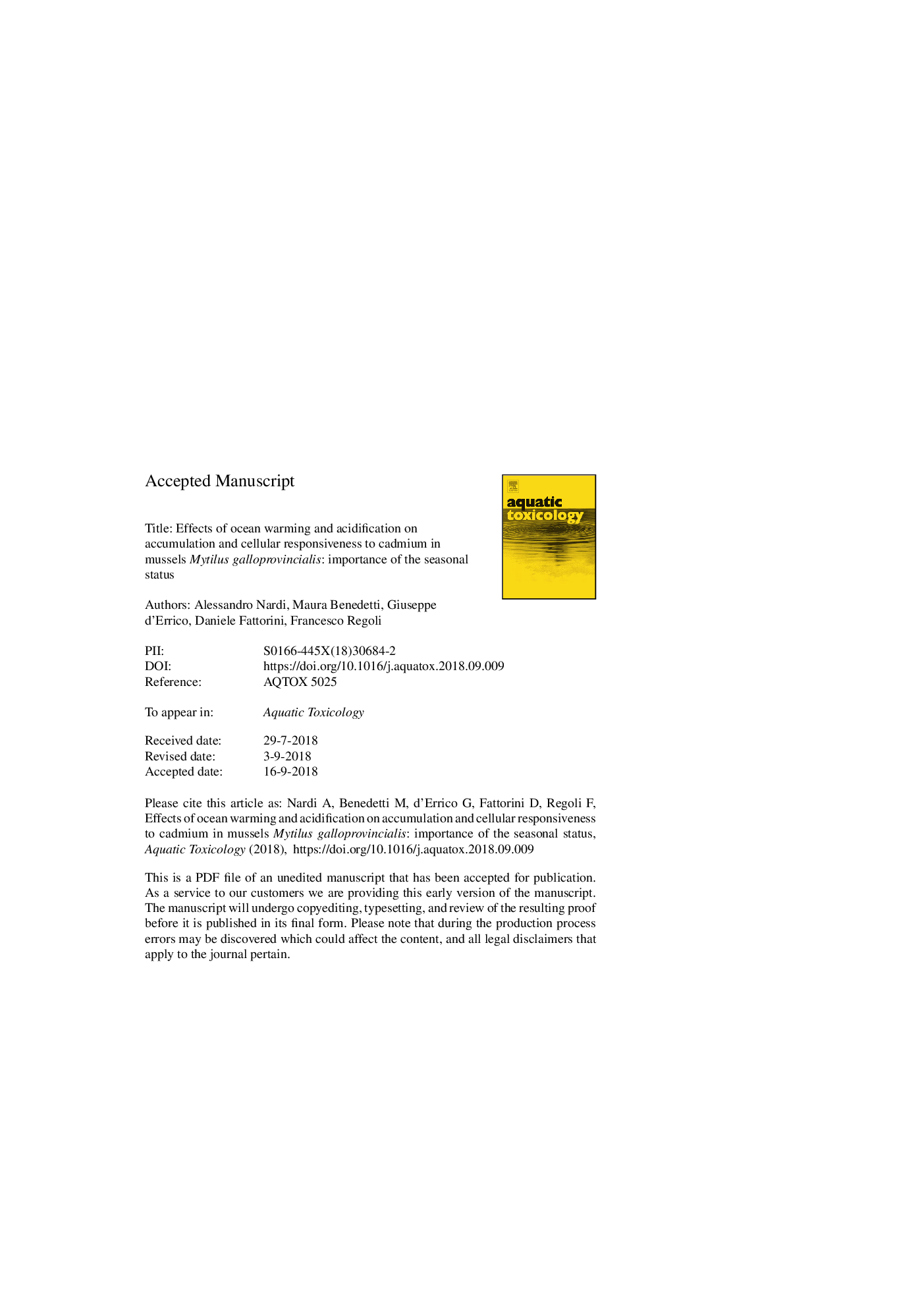| Article ID | Journal | Published Year | Pages | File Type |
|---|---|---|---|---|
| 11031743 | Aquatic Toxicology | 2018 | 31 Pages |
Abstract
Ocean warming and acidification could represent an additional threat to marine organisms already coping with other anthropogenic impacts, such as chemical contamination in coastal areas. In this study, interactions between such multiple stressors and their synergistic effects in terms of accumulation, detoxification and biological effects of metals were investigated in the Mediterranean mussel Mytilus galloprovincialis. Organisms sampled during the winter period were exposed for 28 days to different combinations of two temperatures (10â°C and 15â°C), two pH/pCO2 (8.20/â¼400μatm and 7.4/â¼3000μatm) and two cadmium concentrations (0 and 20âμg/L). Cadmium concentrations increased in digestive glands and gills of metal-exposed mussels and were further enhanced by co-exposure at higher temperature. Interactive effects of temperature and/or pH were observed on Cd-mediated metallothionein induction, responsiveness of antioxidant system and onset of oxidative damages in lipids, with tissue-specific effects. Immunological effects showed a generalized sensitivity of lysosomal membrane stability toward the investigated stressors with major effects in co-exposed organisms. Cadmium and temperature affected phagocytosis efficiency and composition of haemocyte populations probably influencing the micronucleus frequency through varied mitotic rate. Several differences were highlighted between these results and those previously obtained from mussels exposed in summer, supporting the importance of season when addressing the tolerance of temperate organisms to variations of environmental factors. The elaboration of the whole biomarker results through weighted criteria allowed to summarize specific hazard indices, highlighting tissue-specific sensitivity toward multiple stressors and the need of improving the knowledge on interactions between multiple stressors.
Keywords
Related Topics
Life Sciences
Agricultural and Biological Sciences
Aquatic Science
Authors
Alessandro Nardi, Maura Benedetti, Giuseppe d'Errico, Daniele Fattorini, Francesco Regoli,
